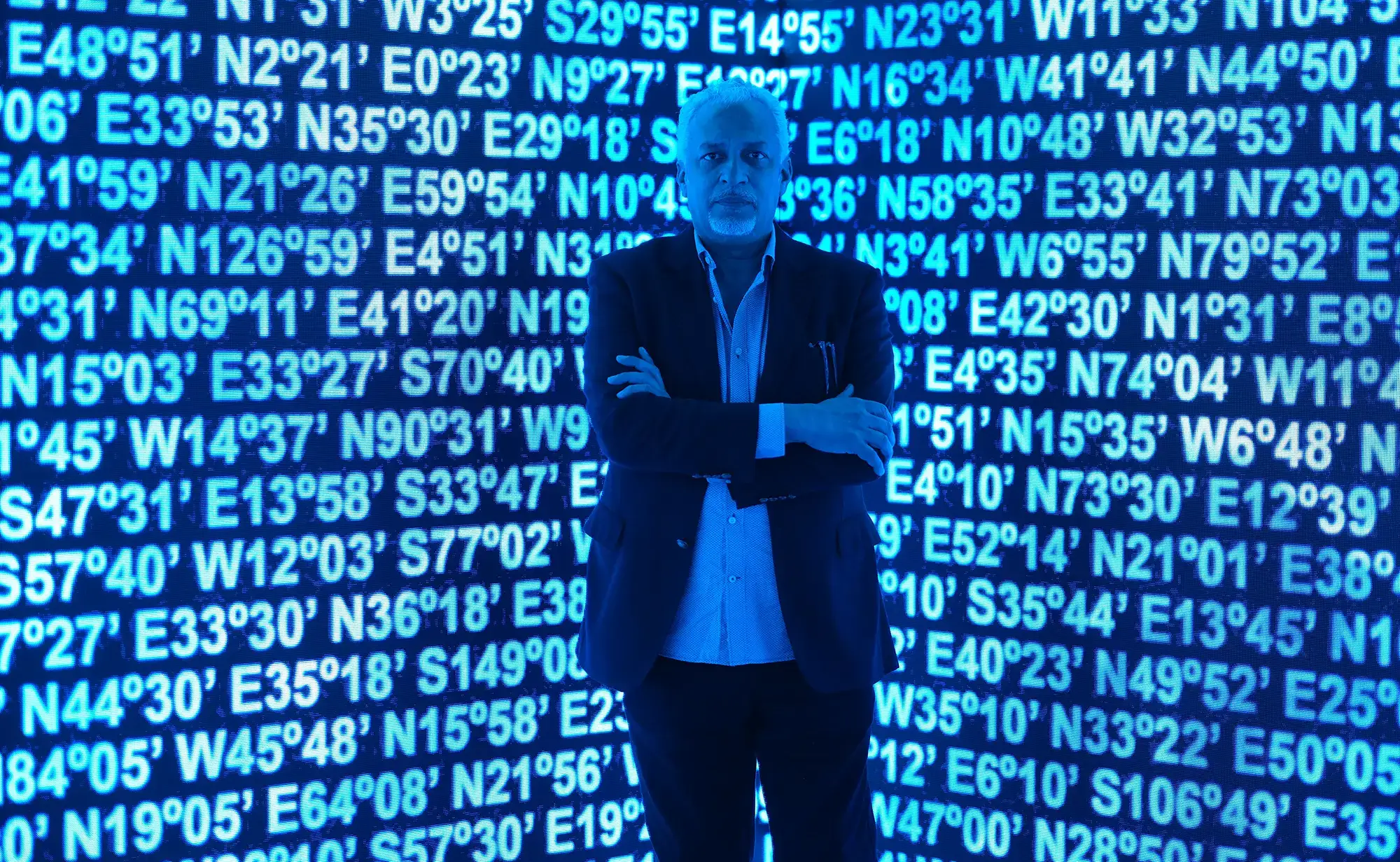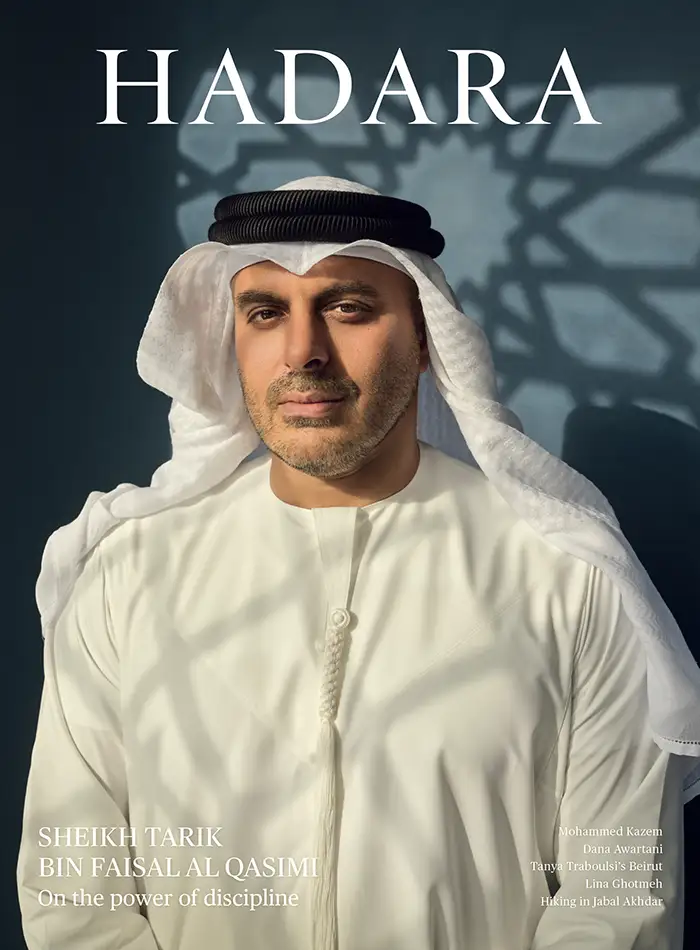Coordinates and Currents
Mohammed Kazem gestures towards freedom, not as an arrival point but as a moving destination.
By Anna Seaman
Photos by Sueraya Shaheen
Mohammed Kazem engages with the world as a field of continuous movement, to which his practice responds across shifting forms. Light, sound, and space migrate from the intangible to become his materials. “I create from everything, from shadows, colours, coordinates—even the distance between me and you is a medium,” he says.
It’s as if he stands on an invisible border: between now and then, here and there, seen and heard. From this threshold, conscious rules dissolve—Kazem folds sound, measures emptiness, collects light, and transforms spaces into fluid experiences.
“I need to keep experimenting every day,” he says. “You won’t discover the secret of the material unless you keep moving. Nothing is still in this world, even now, you are five minutes older than you were when we started this conversation.”
With a career spanning more than four decades, Kazem is widely regarded as a pivotal figure in the development of contemporary art in the UAE. Born in Dubai in 1969, he left school at the age of 14 and studied art under the mentorship of Hassan Sharif, the founding figure of conceptual art in the region. After a brief stint in the army, Kazem returned to pursue his practice. He became a member of the Emirates Fine Arts Society and a central figure in the “Five”, a group of artists including Sharif, Abdullah Al Saadi, Mohammed Ahmed Ibrahim, and Hussain Sharif.
Kazem’s practice is an ongoing inquiry into the ephemeral qualities of the everyday, as well as a comment on contemporary life which is simultaneously defined by borders, yet increasingly globalised, hybrid and digitised.

Opening image, Directions (Merging) at Art Dubai 2025. Shifting animations created a sense of perpetual motion, destabilising precise locations and challenging the notion of fixed borders. Raw Data (1999-2013), a video installation at Sharjah’s Maraya Art Centre, November 2013 to January 2014. Kazem presented numerical coordinates from the vast array of GPS readings he has collected throughout his artistic career. Raw Data photo: Lester Andrew Johnson.
His celebrated Directions series relies on the precise logic of GPS coordinates, even as it prompts us to question orientation, and place. The latest installation in the series, which began in 1999, debuted at Art Dubai 2025. Directions (Merging), a digital installation commissioned by Swiss finance group Julius Baer, took the form of an immersive infinity room, where screens displayed a multitude of GPS coordinates corresponding to various coastal locations set against a backdrop of ocean waves. The shifting animations created a sense of perpetual motion, destabilising precise locations and erasing the boundaries that divide place and people.
The Directions series began in water. After a fishing trip accident left him temporarily disoriented at sea, Kazem began documenting his position through GPS coordinates. But his use of geographical data goes beyond personal experience, it also relates to the rapid transformation of his native Dubai. “As a contemporary witness to the process of change,” writes art historian Professor Beate Reifenscheid, “Kazem begins by documenting the locations in the landscape and then shifts to their coordinates, which offer a system of orientation that is as abstract as it is real.”
Water has remained a collaborator. For Directions 2002, Kazem released wooden planks inscribed with GPS coordinates into the open waters off the coast of Fujairah, setting them adrift with the unpredictable movements of the sea—a metaphor for detachment from borders and location. The work was first presented as a video at the Sharjah Biennial in 2003, and later as a 360° video projection at the Singapore Biennial in 2006, creating the impression for the audience that they were bobbing aimlessly on the high seas instead of the floating wood.
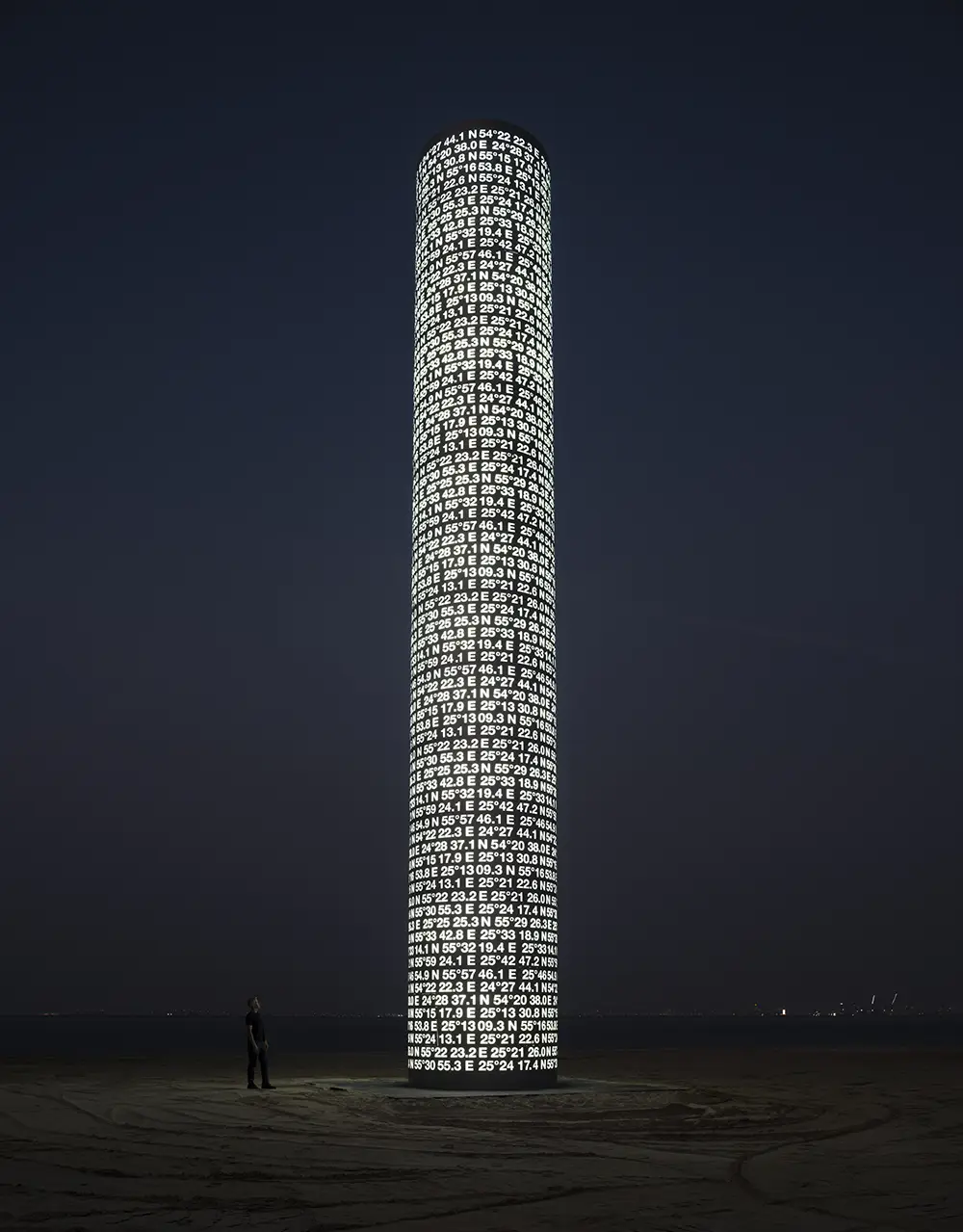
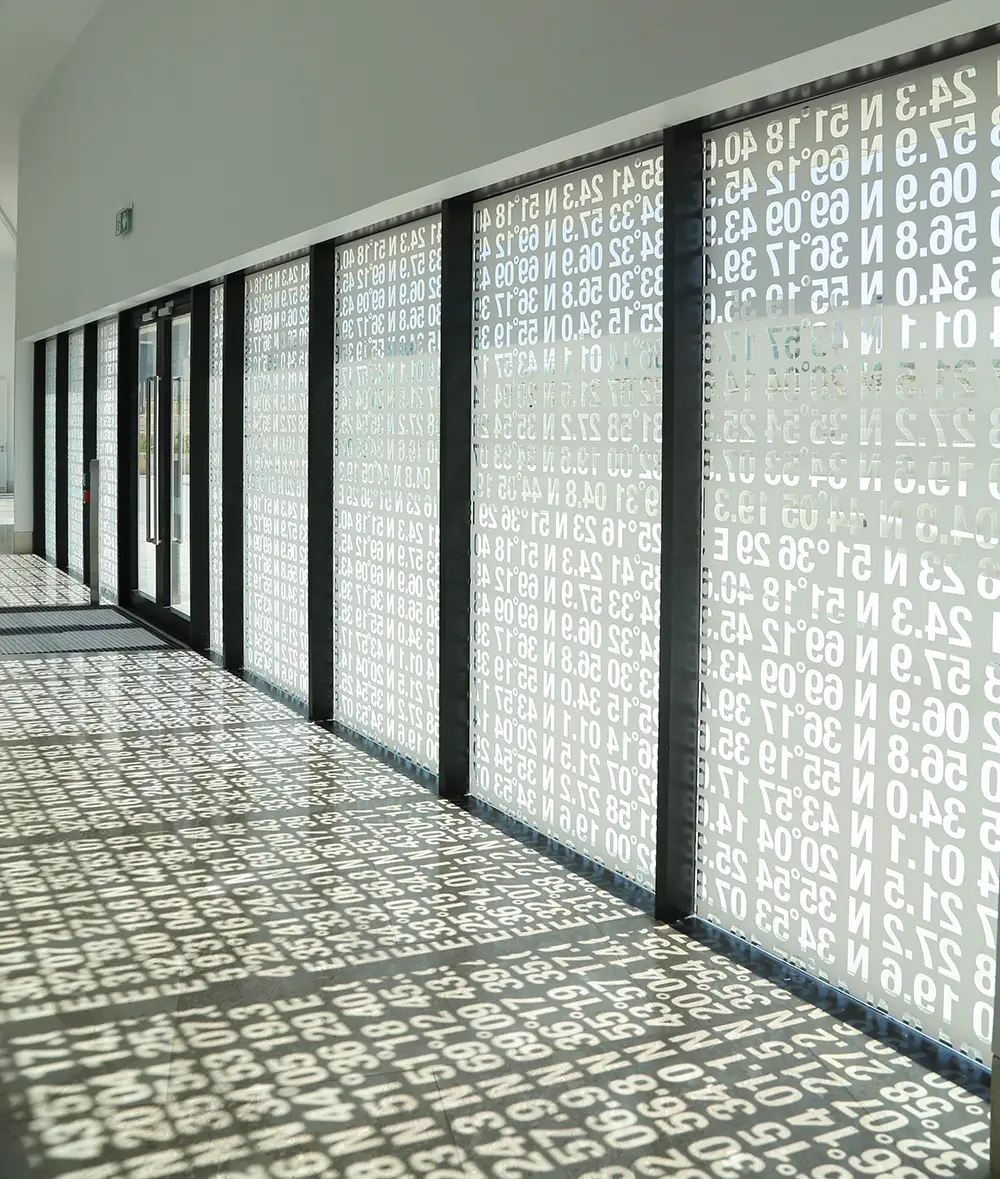
Top, Directions (UAE) showcased the coordinates of the seven emirates. Opposite, Directions (Border), vinyl on glass, at The Palestinian Museum in Birzeit, August 2017 to January 2018. Directions (UAE) photo by Lance Gerber; Directions Border by Hamoudi Shehadeh, The Palestinian Museum. Courtesy of Mohammed Kazem.
When Kazem represented the UAE at the Venice Biennale in 2013, it was with another all-encompassing experience. Walking on Water also featured a 360° video projection of the ocean’s surface, with GPS coordinates displayed on the floor, immersing viewers in the sensation of being lost at sea.
Suheyla Takesh, director of Sharjah’s Barjeel Art Foundation, notes that this was “one of the most resonant moments in Kazem’s career, as it placed him—and the UAE’s conceptual art scene—on an international stage.” However, she emphasises that it was his Directions series, which informed the Venice installation, that marked the “subtle yet radical shift in his career” and foregrounded his rise to prominence.
After Venice, Kazem continued to garner international acclaim. He went on to complete residencies at institutions including the University of Cincinnati in Ohio (2018), Shangri La Museum of Islamic Art, Culture and Design in Honolulu (2017), Pepper House Residency in Kochi, India (2016), Seoul Art Space Geumcheon in South Korea (2016), and The Watermill Center in Long Island, New York (2014).
In 2023, Kazem held a solo exhibition at the Ludwig Museum in Koblenz, Germany, also titled Directions. The show, curated by Professor Reifenscheid, featured several notable works, including Collecting Waves (2022), a series of aerial photographs that captured waves at Al Hamriyah beach in Sharjah, accompanied by a light installation charting the coordinates of those waves. This work and Measuring Nothing (2022), in which dotted lines of LEDs traverse aluminium sheets mapping arbitrary points on the wall, suggest the futility, and even absurdity, of conventional systems of measurement.
“Nothing is fixed,” Kazem says. “Even and especially those things we try to define with measurements. It depends upon where we are standing or what direction we are facing.”
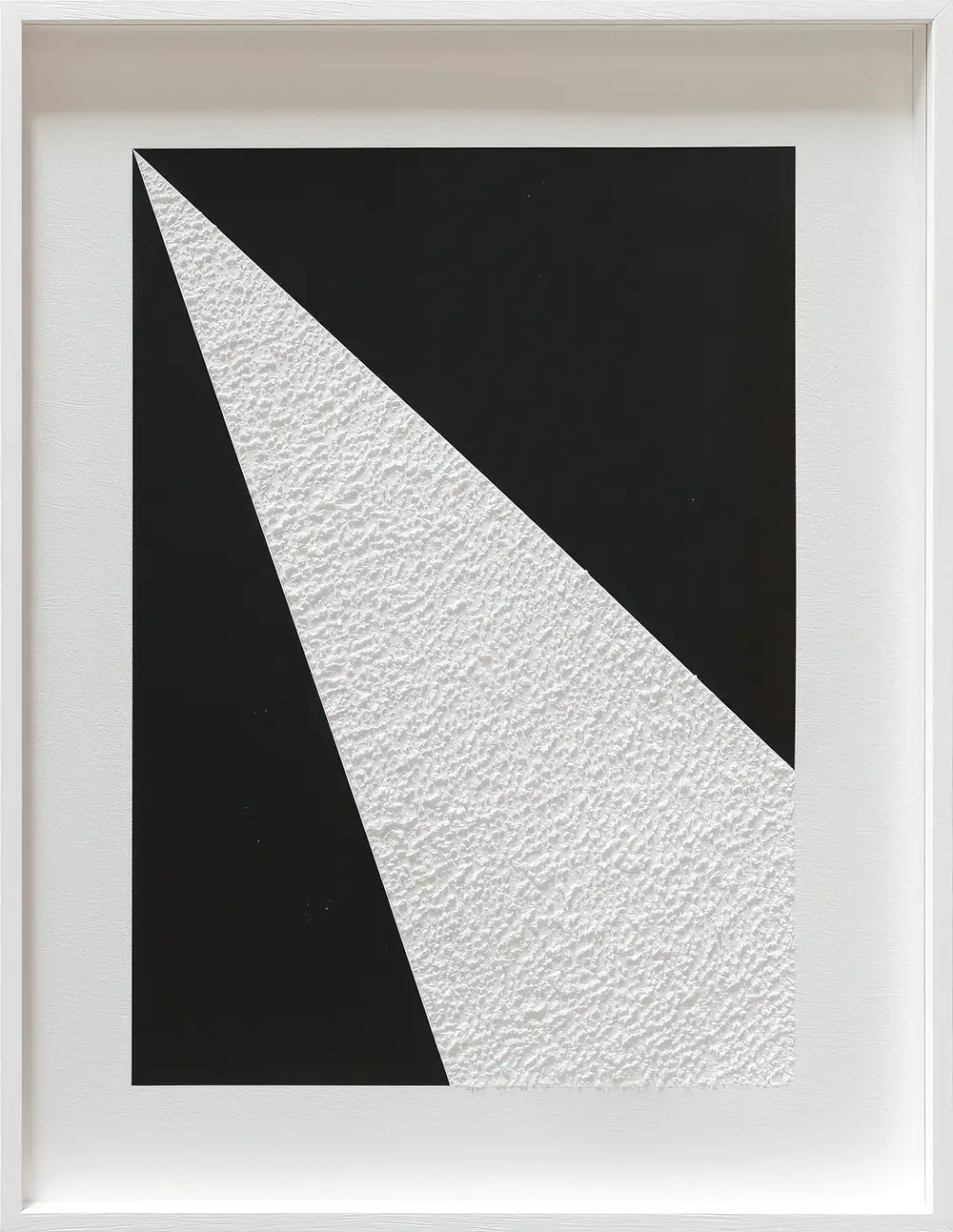
Sound of Angles No 3 (2020). Scratches and inkjet print on Hahnemuhle paper.
But while this ongoing interrogation of location and measurement has become his signature, Kazem’s practice is far from singular. It is broad and fluid. A visit to his studio in Nad Al Hamar—a low-lying suburb of Dubai flanked by major highways, where the spikes of the skyline are visible on a clear day—reveals the quiet nuances of his artistic process.
Sunlight filters through a thicket of native trees outside, casting shifting shadows across the studio. Spread across a large table are recent works from the Scratches series—a methodical yet improvisational practice that translates sound into visual rhythm. It’s a body of work he has revisited over many years. The marks, scored into paper with scissors, appear delicate and cryptic like an unreadable script. Still, they are curiously compelling. Kazem likens the process to playing music: “It is like [that], in that I move my hand in different ways to the rhythm of sounds to make scratches on the paper. But these are not conventional sounds—they are sounds collected from light or from the angle when you open and close a door.”
This is translated directly in Sound of Angles (2014), where he scratched geometric sections representing the shifting angles formed as a door is opened and closed. In Scratches on Paper (2011–14), a 10-metre scroll now held in the Guggenheim’s collection, Kazem’s subtle incisions unfold over a large scale, and in Folding Sounds (2021) scratches distort the light across a flat surface.
These works are quiet, but it is their subtleties that give them their power. Just as shadows change with the movement of the sun, so do these scratched surfaces—an allegory for life’s emotional rollercoaster that also varies with time and perspective.
If Scratches makes sound and light tactile objects, and Directions renders precise locations unstable, then perhaps Kazem’s work pivots on releasing stability in favour of motion and letting go of singular truths to embrace shifting perspectives. His practice doesn’t seek to map the world as it is, but to loosen definitions, dissolve boundaries, and drift beyond borders.
“It’s all about freedom,” he says, pointing to a text he wrote about Directions (Expo 2020), commissioned for the Terra pavilion. “The fundamental idea lies in the viewer feeling that he is the coordinates that move with light and water, he is the one who penetrates the geographic lines that drew the maps. This in itself pushes mankind to transcend the idea of a narrow perspective of the world as divided into national or ethnic blocs and patches. Here we penetrate all these walls and say: The world belongs to everyone.”

